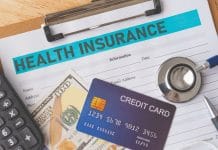Have you ever found yourself in a financial pinch with no checking account to fall back on? You’re not alone. Millions of Americans operate outside traditional banking systems but still need access to emergency funds when life throws unexpected expenses their way.
The No-Check Loan Landscape in 2025
The financial world has evolved significantly in recent years, and today’s lending market offers several options for those seeking payday loans without the traditional paper check requirements. Whether you’re underbanked by choice or circumstance, these alternative lending pathways have become increasingly accessible.
Why Traditional Checks Are Becoming Obsolete in Lending
In our increasingly digital economy, the paper check is quickly becoming a relic of the past. Modern lenders have adapted accordingly, offering streamlined processes that work with—not against—how many Americans actually manage their finances.
“Having to write a post-dated check used to be standard practice for payday loans,” explains financial inclusion advocate Maria Sandoval. “But this automatically excluded millions of hardworking Americans who don’t maintain traditional checking accounts.”
How No-Check Payday Loans Actually Work
When you apply for a payday loan without a check, the process differs in key ways from conventional lending. Here’s what to expect:
Digital Verification Methods
Instead of requesting a physical check, lenders now use sophisticated electronic verification systems to confirm your identity and income. This typically involves:
- Reviewing digital bank statements (if available)
- Verifying employment through electronic means
- Using alternative data points to assess creditworthiness
- Implementing secure digital signature technology
The Application Process Simplified
- Online Application: Complete a secure form with personal and financial information
- Identity Verification: Submit digital copies of your ID, typically through a mobile app
- Income Proof: Provide electronic pay stubs or bank statements
- Loan Agreement: Review and sign documents digitally
- Fund Disbursement: Receive funds through direct deposit, prepaid debit card, or digital wallet
Qualifying Without a Traditional Checking Account
One of the most common questions we hear is: “Can I really get approved without a regular bank account?” The answer is increasingly yes, though requirements vary by lender.
Essential Requirements
Most no-check lenders will ask for:
- Valid government-issued photo ID
- Proof of steady income (pay stubs, benefits statements)
- Some form of account for receiving funds (prepaid card, digital wallet)
- A working phone number and valid email address
- Residence verification (utility bill, lease agreement)
Income Verification Alternatives
Without traditional bank statements, you might demonstrate income through:
- Digital payment app history (Venmo, Cash App)
- Direct deposit records to prepaid cards
- Employer verification letters
- Tax return documents
- Benefits award letters
Comparing Your No-Check Loan Options
Not all alternative lenders are created equal. Here’s how different options stack up:
| Loan Type | Typical Funding Speed | Cost Range (APR) | Maximum Loan Amount | ID Requirements |
| Online Payday | 1-24 hours | 200-500% | $100-$1,000 | Standard ID + Digital Verification |
| Installment | 1-3 days | 100-300% | $500-$5,000 | Standard ID + Income Verification |
| Cash Advance Apps | Minutes to hours | Monthly fee or tip-based | $20-$500 | Digital ID Verification |
| Community Programs | 2-7 days | 15-36% | Varies | Standard ID + Proof of Need |
Where to Find Legitimate No-Check Lenders
Finding reputable lenders who don’t require checks requires some research. Consider these avenues:
Online Lending Platforms
Many online lenders specialize in serving the underbanked population. Look for platforms that clearly display their regulatory compliance information and have transparent fee structures.
Mobile Lending Apps
Several innovative apps have emerged that offer small cash advances without traditional checking requirements. These typically link to your existing payment apps or prepaid cards.
Community Financial Organizations
Some community development financial institutions (CDFIs) and credit unions have developed programs specifically for underbanked individuals, offering more affordable terms than typical payday lenders.
Understanding the Costs and Terms
Let’s be honest—alternative lending options typically come with higher costs than traditional loans. Before proceeding, make sure you understand:
Typical Fee Structures
- Interest rates: Usually calculated as a daily or weekly percentage
- Service fees: One-time charges for processing the loan
- Late payment penalties: Additional charges if you miss your payment date
- Rollover costs: Fees for extending your repayment period
Repayment Options
Without writing a check, you’ll need to understand how repayment works:
- Automatic withdrawals from linked accounts
- Manual payments through apps or online portals
- Cash payments at partner retail locations
- Money order submissions
Legal Protections for Borrowers
Despite their alternative nature, no-check payday loans are still subject to regulations designed to protect consumers.
Federal Oversight
The Consumer Financial Protection Bureau (CFPB) provides oversight for payday lending practices nationwide. Their guidelines offer important information about your rights as a borrower.
State-Specific Regulations
It’s crucial to understand that payday loan regulations vary dramatically by state. Some states cap interest rates and fees, while others prohibit these loans entirely. Always check your local regulations before applying.
Smart Borrowing Strategies
Taking out any short-term loan requires careful planning. Here are some strategies to borrow responsibly:
Before You Apply
- Exhaust alternatives: Have you explored assistance programs, payment plans, or small personal loans from friends and family?
- Calculate the true cost: Use online calculators to determine the actual amount you’ll repay, including all fees and interest.
- Borrow only what you need: Taking more than necessary increases costs and repayment difficulty.
After Receiving Funds
- Document everything: Keep digital copies of all loan agreements and payment confirmations.
- Create a repayment plan: Set calendar reminders for due dates and ensure funds are available.
- Prioritize repayment: Given the high costs, pay off these loans before less expensive debt.
Avoiding Predatory Lending Traps
Not all lenders have your best interests at heart. Watch for these red flags:
- Pressure to borrow more than requested
- Confusing or vague terms and conditions
- No clear explanation of fees or interest rates
- Requirements for upfront payments before receiving funds
- Lenders not registered with state regulatory agencies
Alternatives to Consider
Before committing to a payday loan, explore these potentially less expensive options:
Earned Wage Access Apps
Several employers now partner with services that allow you to access already-earned wages before payday, often for minimal fees.
Buy Now, Pay Later Services
For specific purchases, BNPL services might offer interest-free installment options that are more affordable than payday loans.
Local Emergency Assistance
Many communities have emergency assistance funds for utilities, rent, or other urgent needs that don’t require repayment.
Building Toward Financial Inclusion
While no-check payday loans can provide crucial emergency funds, the ultimate goal should be moving toward greater financial inclusion.
Steps Toward Banking Access
Consider these stepping stones toward traditional banking:
- Second-chance checking accounts are designed for those with banking difficulties
- Secured credit cards that help rebuild credit history
- Community development credit unions with mission-driven membership policies
Final Thoughts: Making Informed Choices
When facing financial emergencies without a checking account, knowledge is your most powerful asset. By understanding the full landscape of no-check payday loan options, their costs, and alternatives, you’re equipped to make decisions that address immediate needs while protecting your financial future.
Have you used alternative lending services? What was your experience? Share your insights in the comments below or reach out if you have additional questions about navigating the financial system without traditional banking relationships.
Note: This article is for informational purposes only and does not constitute financial advice. Always consult with a qualified financial professional before making significant financial decisions.

























